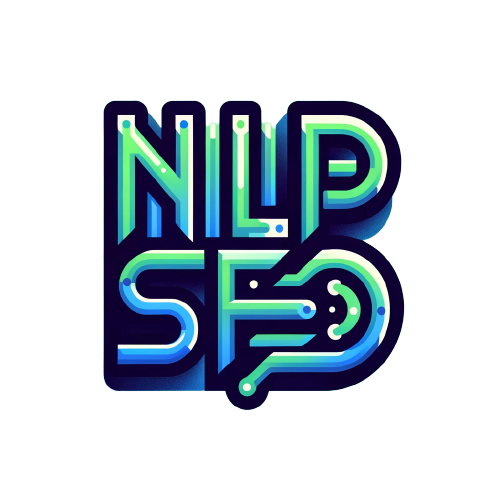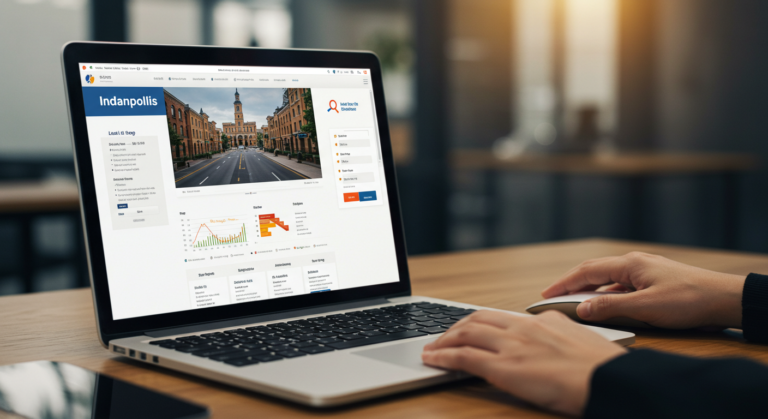Enhancing Content Optimization Using NLP Techniques
The realm of natural language processing (NLP) tools and software has experienced a remarkable expansion, presenting marketers with an eclectic array of options to amplify their content strategies. Take, for instance, stalwart platforms like Python’s NLTK and SpaCy—these are not just frameworks; they’re veritable powerhouses for text analysis! With capabilities ranging from sentiment analysis to named entity recognition, the potential is staggering.
And let’s not forget about the cloud-based titans: Google Cloud Natural Language and IBM Watson. These giants come equipped with user-friendly interfaces that promise scalability galore! They’re designed to cater to businesses of all sizes, ensuring everyone can tap into their vast reservoirs of linguistic prowess.
But wait—there’s more! Enter specialized software like SEMrush and Clearscope, which seamlessly weave NLP functionalities into their content optimization arsenals. These innovative tools empower marketers with keyword analysis wizardry, topic suggestions that spark curiosity, and meticulous content structuring—all aimed at harmonizing produced material with audience appetites and search engine algorithms alike. By harnessing these formidable resources, organizations can not only streamline their content creation processes but also elevate the overall impact of their marketing endeavors in this ever-evolving digital landscape.
Popular NLP Platforms for Marketers
The ascent of natural language processing (NLP) has sparked an explosion of platforms tailor-made for the intricate needs of marketers. These cutting-edge tools are packed with advanced features that dive deep into consumer sentiment, craft pertinent content, and amplify search engine visibility in ways previously unimaginable. Giants like Google Cloud Natural Language and IBM Watson roll out powerful APIs that seamlessly weave NLP capabilities into the very fabric of existing workflows—an integration that feels almost magical. Through these resources, marketers can unearth precious insights from the chaotic realm of unstructured data, paving the way for laser-focused campaigns.
But wait—there’s more! Enter Microsoft’s Text Analytics service: a gem for those keen on mastering sentiment analysis and honing in on key phrases. This platform doesn’t just polish content strategies; it also elevates A/B testing to new heights by providing invaluable feedback on linguistic effectiveness. And let’s not overlook specialized players like SEMrush and Clearscope; they shine in SEO-driven content optimization by leveraging NLP to suggest keywords and structural formats that truly resonate with target audiences. By tapping into this sophisticated arsenal of platforms, marketers can supercharge their content optimization endeavors and witness tangible outcomes unfold before their eyes!
Content Structuring with NLP Techniques
Natural Language Processing (NLP) bursts forth with a cascade of innovative techniques for structuring content, dramatically elevating user experience while simultaneously boosting search engine visibility. Picture this: algorithms meticulously dissecting linguistic patterns, revealing intricate relationships between topics and their subtopics—it’s like uncovering hidden connections in a vast web of information! Marketers can then weave these insights into a coherent framework, creating an organized tapestry where related ideas coalesce seamlessly. This not only enhances reader comprehension but also amplifies engagement as users navigate through the thoughtfully curated content.
But wait, there’s more! When it comes to harnessing NLP-driven methods for content structuring, we dive deep into the realm of semantic search optimization. As search engines evolve, they grow ever savvier at deciphering the intent lurking behind user queries—not just playing a game of keyword match-up anymore. By tapping into NLP to craft topic clusters that resonate with those subtle nuances in search behavior, marketers can produce richer content that truly speaks to their audience’s needs. This savvy strategy doesn’t just boost discoverability; it catapults brands into the spotlight as authoritative voices within their niches—commanding attention and respect!
Creating Topic Clusters for Better Organization
Topic clusters emerge as a dynamic strategy, weaving content into an intricate tapestry centered around a unifying theme. Imagine this: related articles and resources huddled together beneath a towering pillar page, creating not just an enhanced user experience but also turbocharging SEO performance. This architecture fosters seamless interlinking among pieces, making navigation a breeze for both users and search engines alike. When executed with finesse, topic clusters can solidify authority in any given subject area while boosting the chances of soaring search rankings.
But hold on—implementing these clusters isn’t just about throwing words on a page; it demands meticulous planning and sharp analysis of keywords that orbit the main theme. Marketers must sift through the digital noise to pinpoint key topics that truly resonate with their audience’s interests, crafting high-quality, informative gems for each cluster along the way. Tapping into tools like keyword research and audience insights becomes essential in illuminating these focal points. As content proliferates, keeping everything neatly organized via topic clusters ensures information remains accessible, relevant—and most importantly—aligned with user intent. The ultimate goal? To ignite engagement and foster retention in this ever-evolving landscape!
| Cluster Topic | Related Articles | Keywords | Interlinking Strategy |
|---|---|---|---|
| Content Marketing | 1. Best Practices for Content Creation 2. Measuring Content ROI 3. Content Distribution Strategies |
Content strategy, content marketing tips, audience engagement | Link from articles to the main content marketing pillar page and to each other for cross-referencing |
| SEO Techniques | 1. On-Page SEO Essentials 2. Off-Page SEO Strategies 3. Local SEO Tactics |
SEO basics, keyword optimization, backlinking techniques | Create a central hub for all SEO articles with links interconnecting to ensure comprehensive coverage of SEO techniques |
| Email Marketing | 1. Building an Email List 2. Email Personalization Techniques 3. Analyzing Email Campaign Metrics |
Email outreach, marketing funnels, engagement metrics | Direct links to the master email marketing page and facilitate user-friendly navigation between tips and analytics articles |
| Social Media Strategy | 1. Platforms for Brand Presence 2. Crafting Effective Social Media Posts 3. Social Media Analytics |
Social media engagement, content calendars, audience targeting | Utilize anchor texts to guide readers back to the primary social media strategy page and among related articles to deepen exploration |
Measuring the Effectiveness of NLP Strategies
Assessing the triumph of NLP strategies is crucial for grasping their influence on content marketing. A tangled web of metrics comes into play, like organic traffic growth, engagement rates, and conversion rates—each a piece in the puzzle of digital success. By delving into these indicators, marketers can unearth how profoundly their content strikes a chord with the intended audience and pivot as needed to fine-tune their tactics.
But hold on—it doesn’t stop there! User feedback emerges as another pivotal element, offering rich qualitative insights that numbers alone can’t capture. Surveys become powerful tools; gathering data on audience satisfaction could unveil hidden preferences or pinpoint areas ripe for enhancement. By keeping a vigilant eye on these metrics over time, marketers can iterate and evolve their methods—ensuring that NLP capabilities harmoniously elevate their overarching content optimization aspirations!
Key Metrics to Track Content Performance
Measuring content performance is absolutely vital for grasping how well optimization strategies are hitting the mark. Let’s dive into some key metrics, shall we? First up: organic traffic! This gem reveals just how many visitors are stumbling upon your content via search engines—it’s like a window into the visibility of your work in those vast search results.
But wait, there’s more! Engagement rate comes into play here too; it paints a picture of user interaction with the content itself. If those engagement rates soar high, that’s a glittering sign that your material strikes a chord with readers and nudges them to delve deeper.
And let’s not overlook conversion rates—they’re like the heartbeat of successful content marketing. This metric tells you the percentage of visitors who follow through on desired actions, whether that means signing up for newsletters or actually opening their wallets to make purchases. Quite telling, right?
Now, consider bounce rates as well; they can be quite revealing too! A spike in bounce rates suggests that visitors might be skimming through but then quickly darting away without much interaction—a signal worth noting. When all these metrics come together in one big analysis bowl, they serve up an insightful feast on content performance and guide future development strategies like seasoned chefs crafting their next masterpiece!
- Bounce Rate: A high rate can indicate content that fails to engage visitors, signaling a need for improvement.
- Average Time on Page: This metric shows how long users are staying on your content, reflecting its ability to hold their interest.
- Return Visitors: Measuring the percentage of visitors who return indicates the loyalty and value of your content to your audience.
- Social Shares: The number of times your content is shared on social media proves its relevance and appeal to a wider audience.
- Page Views per Session: This metric helps assess whether visitors are exploring more of your content during their visit.
- Click-Through Rate (CTR): A high CTR indicates effective headlines and calls to action, driving greater audience engagement.
- Customer Feedback: Gathering qualitative data through surveys or comments can offer deeper insights into how your content is perceived.
Future Trends in NLP for Content Marketing
The evolution of natural language processing is an ever-shifting tapestry, weaving intricate patterns that redefine the realm of content marketing. A particularly striking trend emerges with the rise of predictive analytics—a dazzling toolset enabling marketers to not merely observe but indeed foresee audience behaviors and preferences like clairvoyants peering into a crystal ball. By sifting through mountains of data, these sophisticated algorithms unveil hidden patterns, illuminating pathways for crafting content strategies that resonate on profound levels. This proactive methodology doesn’t just generate relevant and timely communications; it serves as a catalyst for engagement and conversions that ripple throughout digital landscapes.
Equally fascinating is the ongoing enhancement of sentiment analysis tools—those keen instruments finely tuned to capture the pulse of audience perceptions and reactions with remarkable precision. As these applications evolve, they empower marketers with deeper insights into customer emotions, refining messaging in ways previously thought unattainable. In a world where brands aspire to forge connections that run deep, leveraging nuanced sentiment insights becomes nothing short of essential—a vital key to unlocking content that truly captivates hearts and minds alike.
Predictive Analytics and its Relevance
Organizations are waking up to the undeniable power of data-driven decision-making in the realm of content marketing. Enter predictive analytics—a fascinating fusion of historical data and machine learning algorithms, working together like an intricate dance to predict future trends and consumer behaviors. Marketers, with this treasure trove of insights at their fingertips, can peer into the crystal ball of potential content performance, adapting their strategies to strike a chord with their target audience.
But wait—there’s more! The significance of predictive analytics isn’t just about looking ahead; it’s also about fine-tuning target segmentation. This enables marketers to sculpt personalized experiences that truly engage customers on a deeper level. By predicting user wants and whims before they even know them themselves, companies can allocate resources with precision and pivot their content strategies on a dime. This nimbleness not only boosts audience satisfaction but also fortifies brand loyalty amid the whirlwind of today’s competitive marketplace.
Case Studies of Successful NLP Applications
In the bustling realm of content strategy, a handful of companies have deftly wielded NLP techniques to elevate their game. Take HubSpot, for instance—a shining beacon in this landscape—where they’ve ingeniously employed NLP for topic clustering. By diving deep into user queries and weaving content around these intricate clusters, HubSpot has not just enhanced its SEO performance; it’s orchestrated a symphony of better discoverability and engagement that has led to an impressive surge in organic traffic.
Then there’s Amazon, striding confidently through the e-commerce sector with its own NLP wizardry. They dissect customer reviews like seasoned analysts while harnessing sentiment analysis to fine-tune product descriptions. This meticulous approach allows Amazon to craft listings that resonate with actual customer feedback and preferences, creating a harmonious alignment between what consumers want and what is offered. The result? A remarkable uptick in conversion rates as product information becomes increasingly relevant—an artful dance between supply and demand that leaves competitors scrambling in their wake.
Real-World Examples of Enhanced Content Optimization
In a bold move, a leading e-commerce platform recently dove into the world of NLP techniques to supercharge its product description game. With cutting-edge algorithms at their disposal, the company meticulously sifted through customer reviews, pinpointing those elusive key phrases that struck a chord with its audience. The outcome? Nothing short of remarkable; engagement metrics surged like never before, while conversion rates skyrocketed in tandem. This scenario perfectly exemplifies how a data-driven strategy can wield immense power over consumer purchasing behaviors.
Shifting gears to another striking instance, consider a well-known media outlet on a quest to refine its content delivery via topic clustering. By leveraging NLP to weave articles around central themes, they crafted narratives that flowed seamlessly for readers. This methodical approach didn’t just beautify the structure—it revolutionized user experience! Audiences reveled in the ease of navigating interconnected content, leading to longer site visits and an impressive uptick in subscriber numbers—testament to the triumph of this innovative strategy!
Conclusion
As the whirlwind of digital transformation sweeps through the business landscape, one cannot overlook the burgeoning importance of weaving NLP techniques into content optimization strategies. Marketers armed with these cutting-edge tools find themselves unlocking a deeper understanding of audience behaviors, tastes, and evolving trends—a revelation that paves the way for hyper-personalized content that truly resonates. The sheer power to sift through mountains of data equips companies with the means to polish their messaging and elevate engagement among targeted demographics.
Yet, it’s crucial to note: we are merely scratching the surface when it comes to harnessing NLP’s potential in content marketing. With machine learning and artificial intelligence advancing at breakneck speed, there lies an ocean of possibilities waiting to be explored—each wave bringing forth enhancements that could revolutionize NLP applications. By staying ahead of this relentless tide, marketers can seize insights gleaned from nuanced linguistic analyses, setting themselves on a trajectory toward refined content strategies and tangible success in their campaigns.







